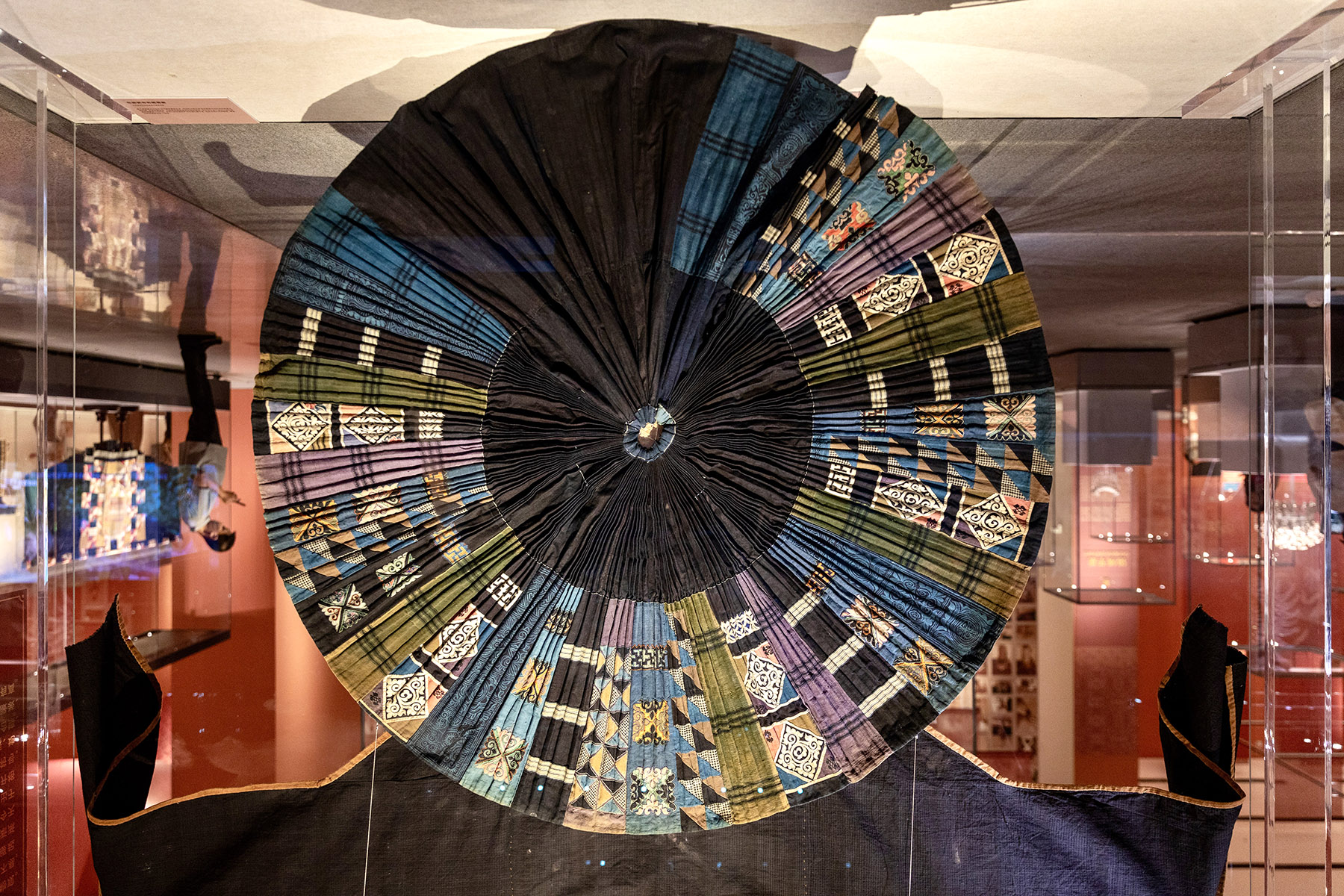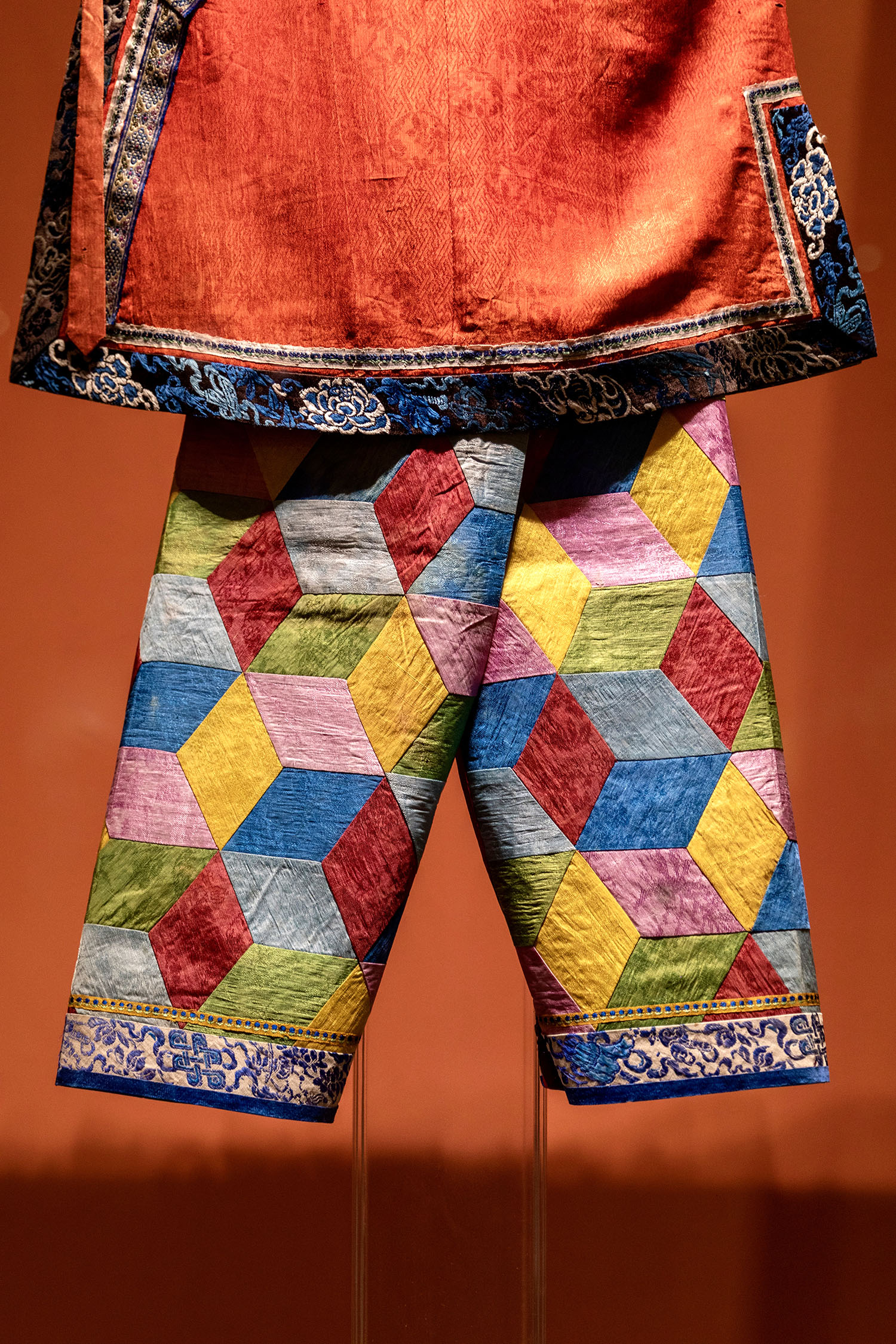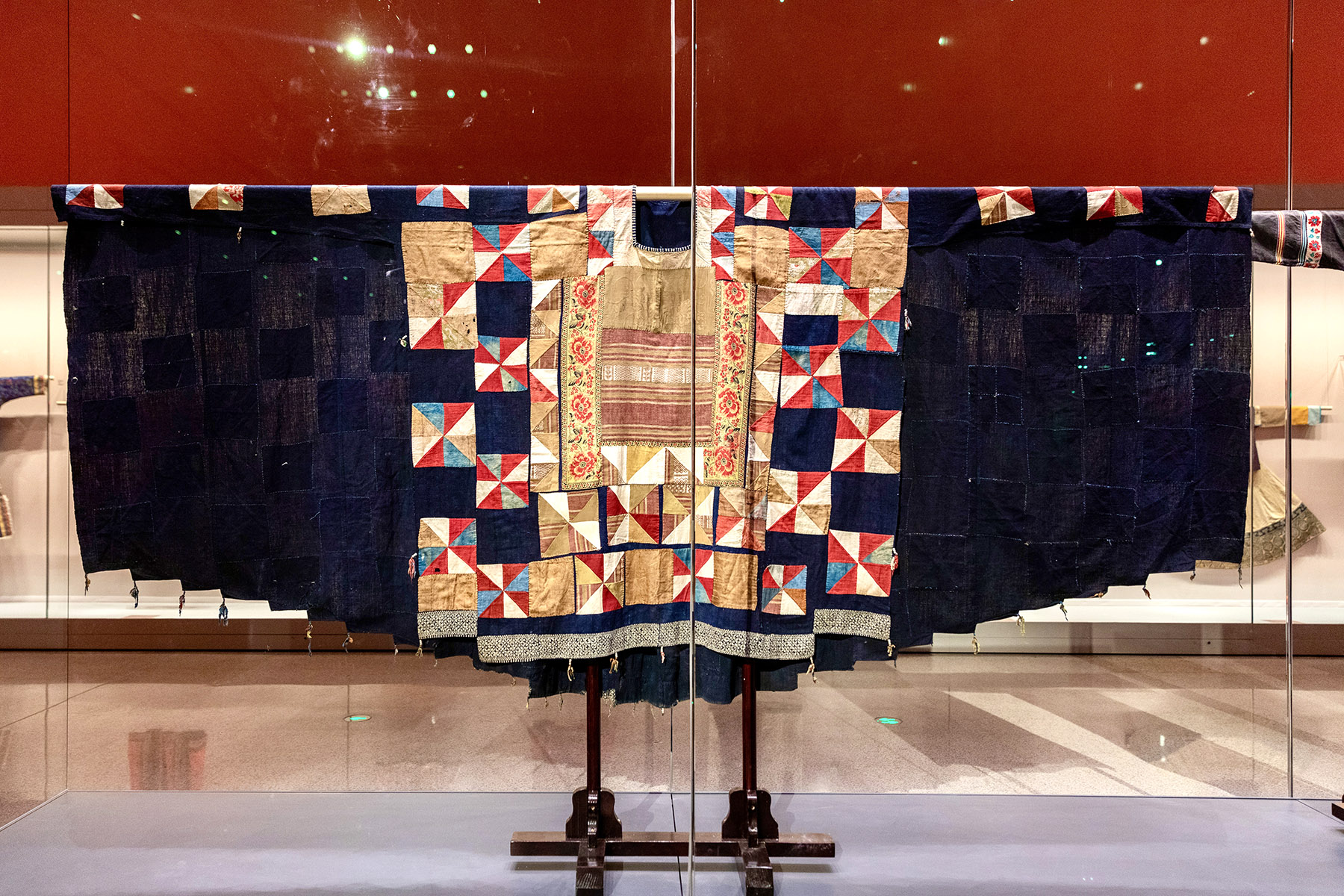Exquisite needlework skills stitch together the past and present, Zhao Xu reports.

What does the word "embroidery" conjure in your mind? A symphony of colors and patterns? Glistening threads woven into delicate artistry? The quiet dedication of countless hours marked by strained eyes and aching backs? Or perhaps the opulence of haute couture, where every stitch whispers luxury? The embroidery of the Miao people — one of the most prominent ethnic groups in southwestern China — embodies all that and more, by fusing history and tradition, craftsmanship and storytelling.
"For the Miao people, embroidery is their Book of Heaven," says Tian Hui, director of the Ethnic Costume Museum at the Beijing Institute of Fashion Technology, one of China's leading fashion colleges. While the Book of Heaven in Chinese mythology contains sacred texts of divine wisdom, the needlework of the Miao people holds the key to understanding the group's history and demography, as well as its cultural and spiritual heritage, says Tian.
One example is the vibrantly colored lines encircling the pleated skirts typically worn by the Miao people. Some researchers of Miao ethnic clothing suggest that these lines represent the great rivers — including the Yellow River and the Yangtze River — that the Miao crossed during their migration thousands of years ago.
READ MORE: Fashionable ladies of the lake
"It is believed that the Miao's migration began with their defeat by the legendary ruler Huangdi, or the Yellow Emperor, more than 5,000 years ago," says Yang Jie, a professor of menswear design at BIFT. Yang was referencing the battle fought between the Yellow Emperor and Chiyou, a tribal leader and mythical figure still revered by many Miao people as their ancestor.
"Given the immense antiquity of the event, it may be impossible to confirm its details, but I am inclined to believe in this narrative, particularly due to the prevalence of peony flowers in Miao embroideries," he continues. "Peonies are not native to the southwestern regions where the Miao have lived for centuries, but rather to the Yellow River Basin. The only plausible explanation is that these people carried the memories of their ancestors with them as they were driven from the fertile land of what would become central China to the more distant, mountainous regions."

Born to a mother from the Miao ethnic group in Central China's Hunan province, Yang grew up with firsthand knowledge of the deep significance that fashion heritage played, both within his family and beyond. "When my maternal aunt married, she wore the heavily embroidered wedding dress once worn by her sister-in-law who had inherited the dress from her own grandmother," he says. "It took years to craft such a dress and, once completed, was meant to be cherished and passed down across generations."
By choosing slow over fast and old over new, the Miao people have managed to preserve their cultural identity through the ages, navigating the turbulence of history and the ever-changing tides of modern life. And they are not alone.
Last year, with over 220 pieces selected from the BIFT museum, the Chinese Traditional Culture Museum in Beijing held a grand exhibition showcasing the rich, diverse fashion legacy of China's ethnic groups.
A standout piece was a voluminous blouse known as guantouyi — meaning pullover — from the ethnic Yi people. One of the two oldest forms of clothing in China, along with the wraparound style, this garment was worn by a shamanic priestess — and likely several before her. Its ample fabrics must have swirled dramatically as she danced around the fire.
A patchwork garment, the piece is made up of many triangular fabric pieces. "Some are noticeably newer than others, as any piece that became very dirty or worn was replaced with a fresh one of similar color," says Gao Dandan, the exhibition's curator and a dedicated researcher of ethnic clothing. "As the blouse was handed down from one priestess to the next, new pieces were continuously added, replacing the old — until they, too, aged. A living historical record, it carried the touch of every hand that mended it and the spirit of those who wore it."
The piece inevitably reminds Gao of so-called bainayi, or the "Hundred-Patch Robe", of which the BIFT museum houses a pristine example from the late 19th century.
"The origin of this garment lies in its Sanskrit name, kasaya, later adapted into Chinese as jiasha, meaning Buddhist clothing," Gao explains. "Kasaya is a traditional Buddhist monastic robe which, stitched from multiple fabric pieces in a patchwork style, symbolizes humility and detachment from materialism."

This belief captivated the ancient Chinese, who viewed bainayi as a safeguard for their children's health, inspired by the resilience of the poor. However, its original association with simplicity and asceticism took a lavish turn during the Ming Dynasty (1368-1644), when the wealthy readily scissored up rolls of fine silk to create opulent versions of the garment, with each piece gleaming like a mirror in a dazzling, luxurious mosaic.
Between 138 BC and 115 BC, Chinese explorer and diplomat Zhang Qian embarked on two journeys across the vast deserts lying to the west of the Western Han Dynasty (206 BC-AD 24), venturing deep into Central Asia and, some scholars believe, even reaching the edges of the Mediterranean world. These monumental undertakings laid the foundation for what would later be known as the ancient Silk Road, a vast network of trade routes that became the lifeblood of commercial and cultural exchange, uniting the entire Eurasian continent.
Shortly after the opening of the Silk Road, techniques for silkworm farming and thread dyeing spread from China's Central Plains to Xiyu (Western Regions), which encompasses today's Xinjiang Uygur autonomous region and part of Central Asia, where locals developed a method that created striking, vibrant chevron patterns on woven cloth. This distinctive design, combined with the luxurious fabric sheen, gave it a dynamic, almost fluid quality, making highly sought-after items during the Tang Dynasty (618-907), when Silk Road activities reached its peak.
ALSO READ: Food, song and dance: Bouyei route to preserving cultural heritage
"It has always been a two-way street," says Gao, who, for the exhibition, paired the museum's enviable collection of ethnic clothing with the latest designs from BIFT's teachers and students. Among them was Yang, who, as a young boy, would watch intently as his mother bent over a piece of embroidery.
"The creative energy and unbridled imagination my mother and her fellow Miao women possess are rooted in nature and its worship," says Yang, pointing to the breezy pleated skirt worn by a branch of the Miao, aptly known as "the short-skirted Miao".
"Women in this group wear multiple skirts at once; the fullness and perkiness are their way of honoring birds, which they greatly admire," Yang explains.
A similar layering tradition exists among the Hani, who inhabit the same southwestern regions of China as the Miao. Their practice of layering tops, each just slightly shorter than the one beneath to reveal all the hems, was inspired by the rice terraces they have been ploughing since many centuries ago.
Reflecting on the bold aesthetics of the Miao people, Yang says, "True dressing-up asks for supreme confidence. That's the core lesson for anyone hoping to take a page from the Miao fashion book."
Contact the writer at zhaoxu@chinadaily.com.cn


